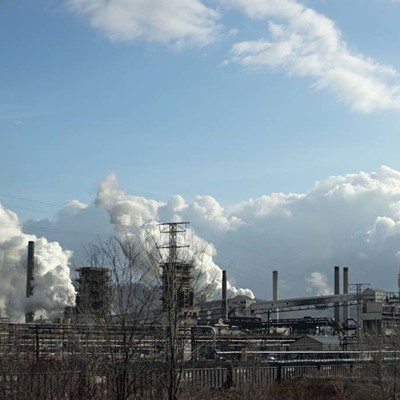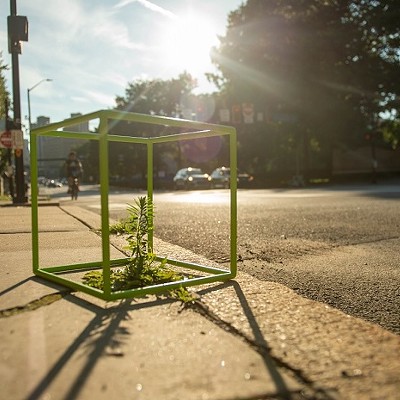Pittsburgh’s proposed new Climate Action Plan is certainly ambitious. Most broadly, it sets the goal of reducing the city’s greenhouse-gas emissions by 20 percent (from a 2003 baseline) by 2023; by 50 percent by 2030; and by 80 percent by 2050. The plan also proposes that by 2030, City of Pittsburgh governmental operations will run on 100 percent renewable electricity, with a vehicle fleet completely free of fossil fuels.
In days when many politicians are leading us, disastrously, into climate denial, even asserting such goals is valuable. “Right now our federal and state governments are missing in action on climate change. So we feel it’s very important the city is trying to do its part,” says local climate activist Fred Kraybill.
But what are the real prospects for fighting climate change in our corner of the world?
Three months ago, a draft of the plan (version 3.0 of a document originally issued in 2008) was released for public comment; it’s now awaiting introduction to Pittsburgh City Council.
The draft credits some 150 local nonprofits, businesses, neighborhood stakeholders and other entities with input. That’s a big change from prior versions, which relied heavily on a handful of civic and business leaders, says Lindsay Baxter, program manager for energy and climate for the Pennsylvania Environmental Council (PEC).
Guiding the process was the Department of City Planning’s Division of Sustainability and Resilience. Grant Ervin, the city’s chief resilience officer, says Climate Action Plan Version 3.0 also goes further in offering an holistic sustainability strategy for Pittsburgh, one that shows how energy generation, transportation, housing and even the food system can work together to reduce pollution. (Denser development, for instance, facilitates walking and public transportation.) And it explores how cutting pollution will improve quality of life, especially for vulnerable populations. For example, reducing home energy use both helps the planet and saves lots of money; curbing diesel emissions also fights asthma. Also new to 3.0 is a section on carbon sequestration: planting trees and conserving forest to trap carbon in soil and plants.
The document suggests that our biggest climate challenges involve buildings: Heating, cooling and lighting Pittsburgh’s residential and commercial structures creates 81 percent of our carbon emissions. That’s why in 2012 the Green Building Alliance launched the Pittsburgh 2030 District, an initiative currently including nearly 500 buildings in Downtown and Oakland whose owners seek to halve energy use, water use and transportation emissions by 2030.
There have been gains on that front: For instance, in one year, parking garages owned by the Urban Redevelopment Authority cut their electricity bills by 57 percent simply by switching to LED lights. Yet it’s not been enough: Between 2008 and 2013, according to Version 3.0, Pittsburgh’s greenhouse-gas emissions actually rose about 10 percent. Pittsburgh’s heavily antique housing stock leaves a lot of room for improvement. “There’s a ton of opportunity in Pittsburgh on the single-family residential side,” says GBA executive director Aurora Sharrard.
Ervin says the city is working with the nonprofit Conservation Consultants, Inc., to coordinate a network of service providers to help retrofit homes for energy efficiency. Other challenges include joining other Pennsylvania cities to convince Harrisburg to revise the state’s outdated building codes with energy efficiency in mind.
Mostly, though — and unlike the imperiled federal Clean Power Plan — the city can’t mandate reductions in carbon pollution. It can only guide, persuade and lead by example. And so it was just last week, when city government announced it had taken delivery of its fleet’s first four all-electric cars, and that by next year it would be charging them using solar energy. Immediately, Ervin says, inquiries arrived from government sustainability folks in Boston, Chicago and Cincinnati. In turn, Ervin says, Pittsburgh can learn from Cincinnati’s own ambitious plan for city-owned solar arrays.
That’s one sort of dynamic Ervin hopes the Climate Action Plan inspires. “What the plan does is kind of give us the guideposts and the how-tos,” he says. “Once you demonstrate the viability of these tools … [p]eople start to see, ‘OK, this isn’t really that tough.’”



















